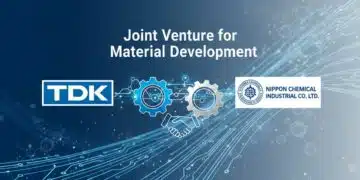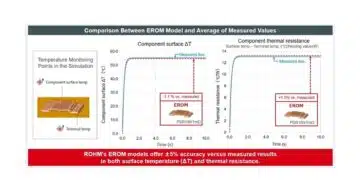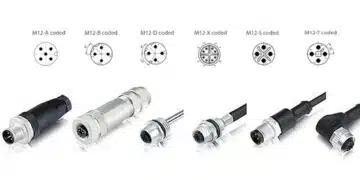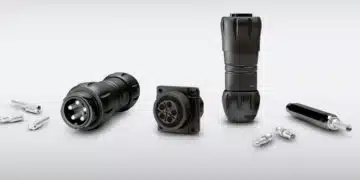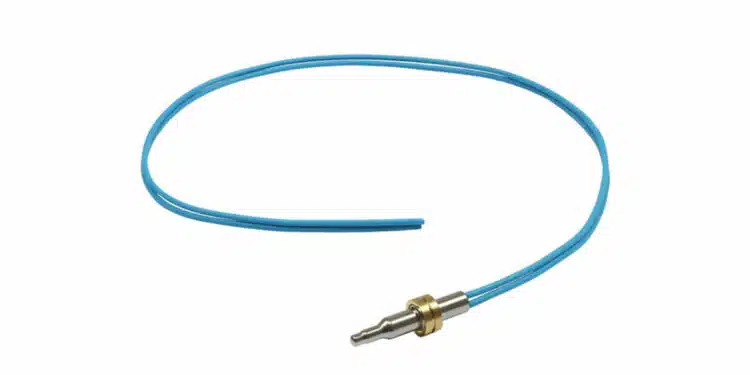Vishay Intertechnology, Inc. introduced a new AEC-Q200 qualified NTC immersion thermistor.
Featuring a miniature design with a compact sensor tip and thin insulated wire, the Vishay BCcomponents NTCAIMM66H is ideal for the small spaces of liquid-cooled automotive systems, where it provides a fast 1.5 s response time to temperature changes.
The rugged device released today consists of a miniature NTC thermistor mounted in a stainless steel 316L housing with lead (Pb)-free brass, and 0.35 mm2 AWG#22 insulated lead wires with a FLR2X construction that enables a traction force higher than 30 N.
These wires allow for direct crimping with automotive connectors – eliminating the need for costly wire to wire connectors – while the stainless-steel housing enables permanent contact with water or other liquids.
The NTCAIMM66H will be used for temperature measurement, sensing, and control in liquid-cooled automotive systems such as HEV/EV on-board chargers (OBC) and charging plugs and sockets, in addition to solar heating systems, energy storage systems, industrial drives and tools, and servers.
The device can be customized with different cable and stripping lengths, gauges, and conductor plating to meet the need of specific applications, enabling Vishay’s customers to integrate the thermistor into their complete sensor solutions for HEV / EV thermal management systems (TMS).
The immersion sensor offers resistance at +25 °C R25 of 10 kW, with tolerance of ± 2 %, and beta (B25/85) of 3984 K, with tolerance of ± 0.5 %. The device features maximum power dissipation of 100 mW and an operating temperature range of -40 °C to +125 °C.
Samples and production quantities of the NTCAIMM66H are available now, with lead times of 12 to 14 weeks.




